
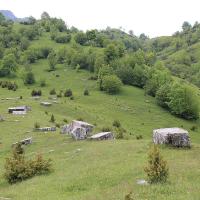

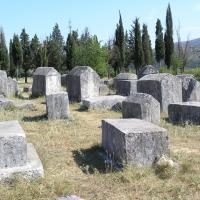
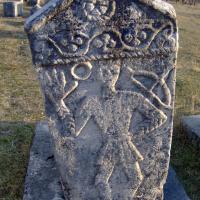

.JPG)
.JPG)
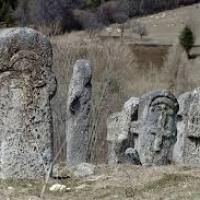
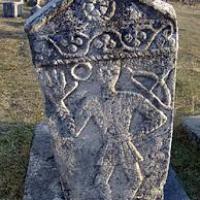
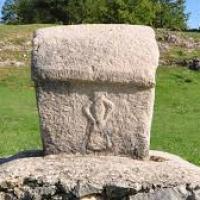
Appearing in the mid 12th century, with the first phase in the 13th century, the tombstones reached their peak in the 14th and 15th century, before disappearing during the Ottoman occupation in the very early 16th century. They were a common tradition amongst Bosnian, Catholic and Orthodox Church followers alike, and are often related to the autochthonous Vlach population, however the original ethnic and religious affiliation is still undetermined. The epitaphs on them are mostly written in extinct Bosnian Cyrillic alphabet. The one of largest collection of these tombstones is named Radimlja, west of Stolac in Bosnia and Herzegovina.
Stećci were inscribed as a UNESCO World Heritage Site in 2016. It includes a selection of 4,000 stećci at 28 necropolises – of which 22 from Bosnia and Herzegovina, two from Croatia, three from Montenegro, and three from Serbia.
We will visit the stećak locations in the following order.
1. National Museum of Bosnia and Hercegovina: The most beautiful collection of stechak’a in one place from all over Bosnia and Herzegovina. Two stechak’s are in particular intersting a) stechak from the village of Zgošće is located near Kakanj, and stechak from Stipan Grad.
2. Stećak at Pavlovac. The largest stećak in BiH, weighing 32 tons, the tomb of Radivoje Pavlovic, who was killed in 1415.
3. The necropolis on Krupac, a necropolis with twenty stećaks and Islamic tombstones from the 15th century as a nice example of crossing the stećak into a Bosnian Islamic tombstone.
4. A necropolis of stećak tombstones in Šabići on mountain Bjelašnica. The necropolis counts 54 stećaks that were moved and broken by Unprofor in 1994
5. The necropolis of stećci in Umoljani, Bjelašnica. A necropolis with 47 stećaks and 11 islamic tombstone. The necropolis is on the UNESCO World Heritage List
6. Necropolis of stećak tombstones Prečani, Trnovo. A large necropolis of stećaks with 184 stećak, some of them with inscriptions, which makes this necropolis unique and beautiful.
Unavailable for requested date: 24-11-2024